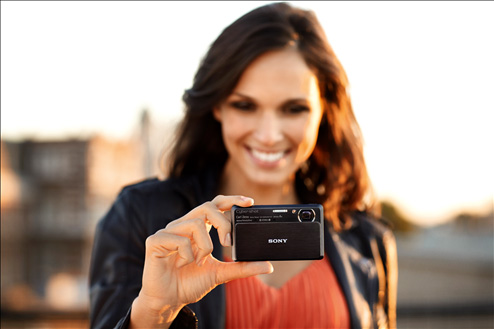If you’re just starting out in digital photography, you’ll realize that many of your shots can get out of focus or ruined if you’re not careful with exposure and camera handling technique. One of the more common problems I find is the presence of shutter lag in digital cameras. You depress the shutter button on the camera, expecting the shot to be taken, but to your surprise the camera waits just a little bit before it “clicks.” That kind of shutter lag can lead to missed photo opportunities and disappointment.

Pre-focusing with a point and shoot camera
So, what’s the solution? Well, it’s simple; you just need to “pre-focus” your shots. In this article, I’ll explain to you what “pre-focus” means and why it is absolutely essential to achieving good photo quality.
1. Understanding Shutter Lag
One of the basic things you need to know about digital cameras is the concept of shutter lag. What is shutter lag? Well, it’s the time lag between the moment you depress the shutter button to the time the camera actually opens the shutter to capture the shot. This lag is mostly inevitable, especially in older digital cameras, due to the limitations in mechanics between the shutter button and the camera optics.
Many budding photographers ignore this lag and expect that a photo will be captured the precise moment the shutter button is depressed. The result? Out of focus pictures and poor quality.
2. Learn To Pre-Focus
The solution to the shutter lag problem is to learn to pre-focus. What does this mean? Well to pre-focus means to press down half-way on the shutter button while you compose the shot. Don’t depress it fully yet. Only when the shot is nicely composed and you’ve got all your subjects smiling properly and so forth do you fully depress the shutter button. By doing this, the camera will take the picture the moment you fully depress the button, leading to much less or negligible lag.
So train yourself to walk around with the camera’s shutter button half depressed! I know I do it very often when I’m out for vacations and seeing many photo opportunities around me!
3. Shutter Lag In Modern Cameras
Most new digital cameras have mechanics which significantly reduce shutter lag. However, older digital cameras have the lag issue and that’s where you need to apply the pre-focus technique. Whenever I’m holding an old digital camera (e.g., I still have an old Canon Digital IXUS), I’m conscious I should always depress the shutter button halfway down, readying myself for any photo opportunity that comes up.
In summary, shutter lag poses quite some problems for new photographers. The essential thing is to practice the pre-focus technique so that you’re already ready at the shutter button when a photo opportunity comes up. Keep applying this technique and the quality of your pictures will improve by leaps and bounds. Good luck!
About the Author:
Gary Hendricks runs a hobby site on digital photography. Visit his website at Basic-Digital-Photography.com for tips and tricks on buying digital cameras, as well as shooting great photos.
Like This Article?
Don't Miss The Next One!
Join over 100,000 photographers of all experience levels who receive our free photography tips and articles to stay current:






If you cannot properly express a technique such as ‘pre-focusing’ you have no business posting these kinds of help sites!
For heaven’s sake – be precise about your advice!
I can agree. It’s a useful tip the newbies.
Juanjo is right, you cannot just walk around with your button half-pressed. It’s the best way to ruin your next photo. Perhaps you can help the autofocus a bit by bringing the focus closer to your shot distance, but that’s all. You better re-focus on each shot and make sure your subject is in focus than to use the previous autofocus settings.
just waiting for a decent compact with a slr speed of shutter lag.. or lack of!
Sorry, but this article just says nonsense. You cannot “walk around” with a half pressed button, because when you half press it, the camera focuses at whatever it has in front of it. If you move the camera to point elsewhere, the focus and exposure will simply be wrong. Prefocusing only works when you have almost the composition ready and just need to adjust what to focus on.